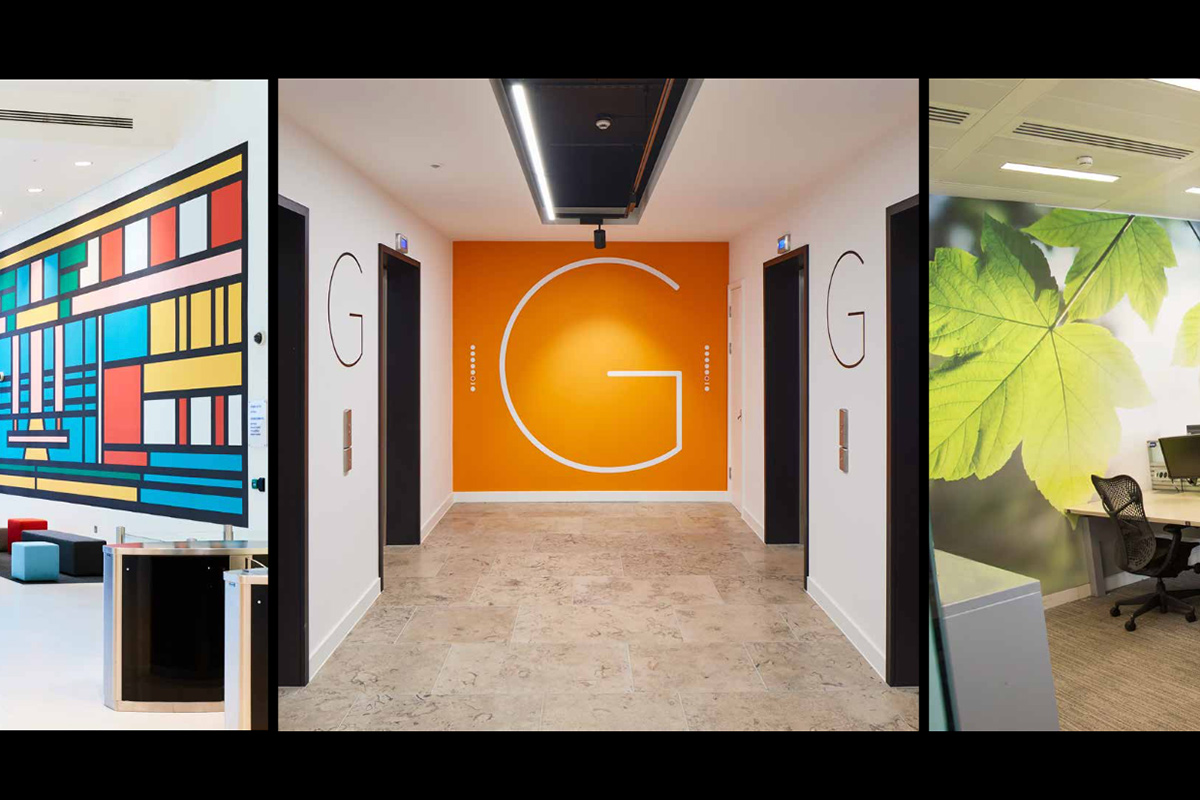Signbox is calling on the industry to raise the bar and adhere to higher standards when it comes to installing printed wallcoverings. Here’s why.
With PSPs increasingly entering the interiors market more needs to be done to ensure they adopt the correct standards according to Signbox business development director Steve Senior.
“What many PSPs and installers don’t realise is that they are responsible for ensuring that the products they print and are then installed for wallcovering use, are compliant with building regulations. Everyone within the supply chain shares in that responsibility, says Senior, pointing out: “We often see projects awarded to competitors where we can clearly see that the products used are not fit for purpose, and even more concerning, may not follow the correct regulations for wallcovering installations.”
That experience has prompted the company - working in close collaboration on the issue with Papergraphics - to call for better awareness and understanding among its peers, contractors and stakeholders in the design and build process.
So what should you be paying attention to? First up, wallcoverings come under the Construction Product Regulations EN 15102:2007+A1:2011 and must conform to the Building Regulations Approved Document B ‘Fire Safety’. This means they need to be fire rated to EN13501-1 (Euroclass) standard, when printed and installed.
To achieve the correct fire rating, EN 13501, the wallcovering has to undergo specific independent testing, which assesses the product performance in relation to smoke release, flame spread and flaming droplets produced. Senior explains: “The testing process deals with the wallcovering product itself - which can be tested either printed, or unprinted (something to look out for), the surface substrate that the products is adhered to, and the specific adhesive product used, to produce an overall performance rating. It’s the complete system that is tested and fire rated.
“We see contractors competing for projects we are bidding for, specifying and using products that may have a different fire rating, but these aren’t necessarily correct for using on wall installations… The product that competitors install may be fire rated correctly but once this product is printed, paste applied and then installed, it is possible that the fire rating may fall foul of the requirements that the client may have expected. Many projects specify the fire rating for the wall covering but simply adding print will invalidate this rating.
“Signbox uses Papergraphics’ Digimura and Muramour wallcoverings, as the entire range achieves the required Euroclass EN 13501 fire rating standard, even when printed, and are all CE certified with a Declaration of Performance, making them suitable for use in domestic, commercial and public interiors.”
Essentially, the key thing to look for is the CE Declaration of Performance (which relates to its reaction to fire (RtF); heavy metals; formaldehyde and vinyl chloride monomers). “But be careful” Senior continues, “as Papergraphics pointed out to us that a replica of a CE mark logo has been in circulation and stands for ‘Chinese Export’.
So what about when the UK leaves the EU? The answer is that nothing will change. The ISO / EN standard may revert back to BS but will remain the same standard.
Standards have not fundamentally changed but recent events around fire safety and standards have highlighted that it’s not the product safety standard only that matters - it is the application. With PSPs increasingly entering the interiors market they need to adopt the correct standards that have always been adhered to by interiors companies and traditional wallpaper manufacturers.
“We’d like to see more PSPs joining in our call for the printing industry to set the bar high for standards to be adhered to at specification level through to install. We would also be happy for anyone to contact us to clarify any of the points about installation and the standards for different products,” concludes Senior.


